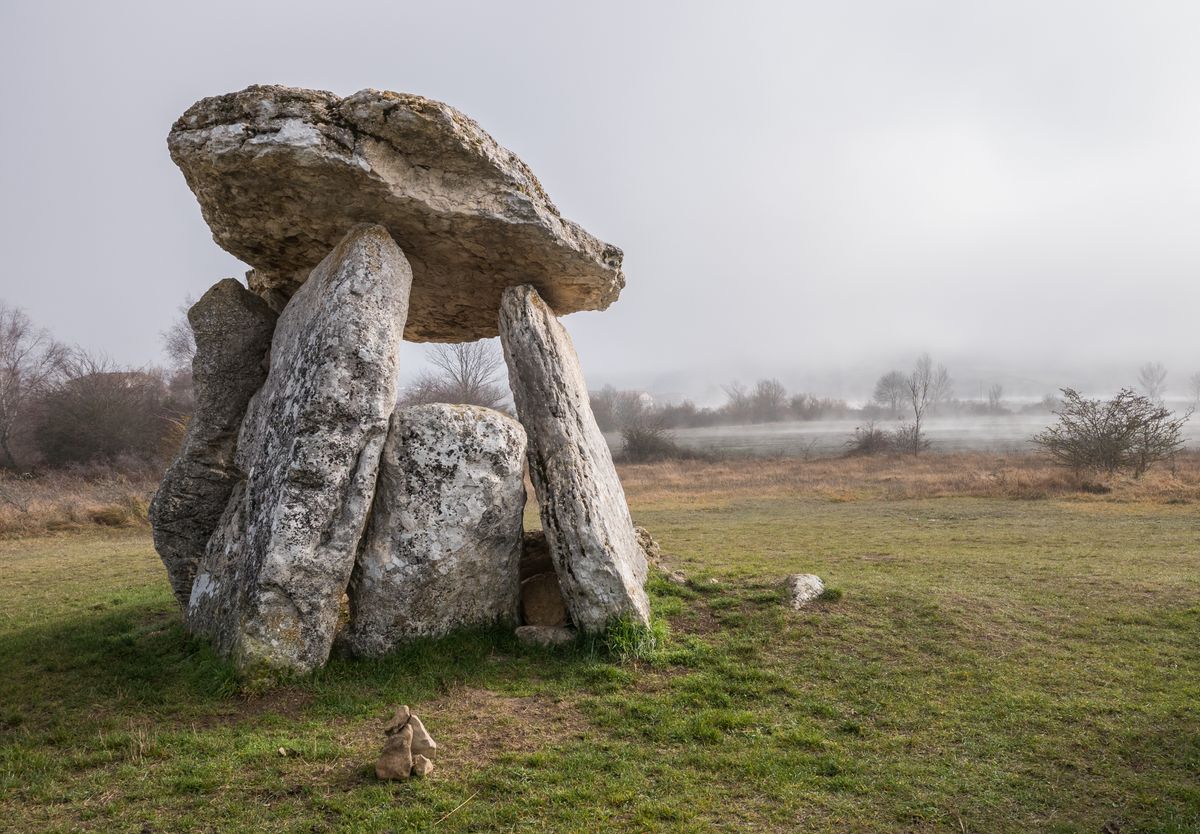About
It is hard to say when the Sorginetxe was first discovered, but the dolmen in northern Spain has been known for a long time. It is a relatively simple stone structure, a polygonal chamber made up of six interlinked slabs with a seventh that forms a ceiling. It currently has no passageway or covering barrow, though this does not mean that it has always been that way.
The name Sorginetxe means "witch's house" in Basque, and is derived from a folk legend according to which it was built by witches who brought the stones down from the Sierra de Entzia Mountains by night on the distaffs of their spinning wheels. Other legends say that the witches lived at Fuente de Lezao in Eguileor, by the cave of the same name, and that they came to the dolmen to comb their hair.
The oldest known description of the structure dates back to 1833. Sorginetxe was partially excavated in 1890 by Julián de Apraiz, who found human remains and a barbed and tanged arrowhead. These finds have since disappeared. In 1913 it was purchased by the Provincial Council of Alava to ensure its conservation.
Related Tags
Community Contributors
Added By
Published
September 25, 2023































